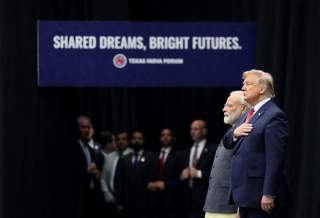Nonalignment Nuances: America Is Laying the Groundwork for a Stronger Relationship With India
Nonalignment remains a powerful strain in Indian foreign policy. Still, India and the United States have fashioned placeholders in case things take a drastic turn for the worse in South Asia—one that might prompt New Delhi to tilt toward Washington.
Rapprochements, then, take time and effort—even between societies that are relatively friendly. U.S. leaders have granted India “major defense partner” status, opening the way for tighter defense collaboration. Combined military and naval exercises continue on a regular basis. The Indian and U.S. armed forces now furnish each other with logistical support. India, the United States, Australia, and Japan confer about political and security affairs under an informal consortium known as the “Quad,” or Quadrilateral Security Dialogue. In short, India and the United States have fashioned placeholders in case things take a drastic turn for the worse in South Asia. They are building habits and hardware for working in harmony.
In other words, the partners are putting the workings of an alliance in place. They are creating opportunities. Diplomats can take care of the parchment later should the two capitals see fit. An entente cordiale is enough for now.
James Holmes is J. C. Wylie Chair of Maritime Strategy at the Naval War College and the coauthor of Indian Naval Strategy in the 21st Century. The views voiced here are his alone.
Image: Reuters

